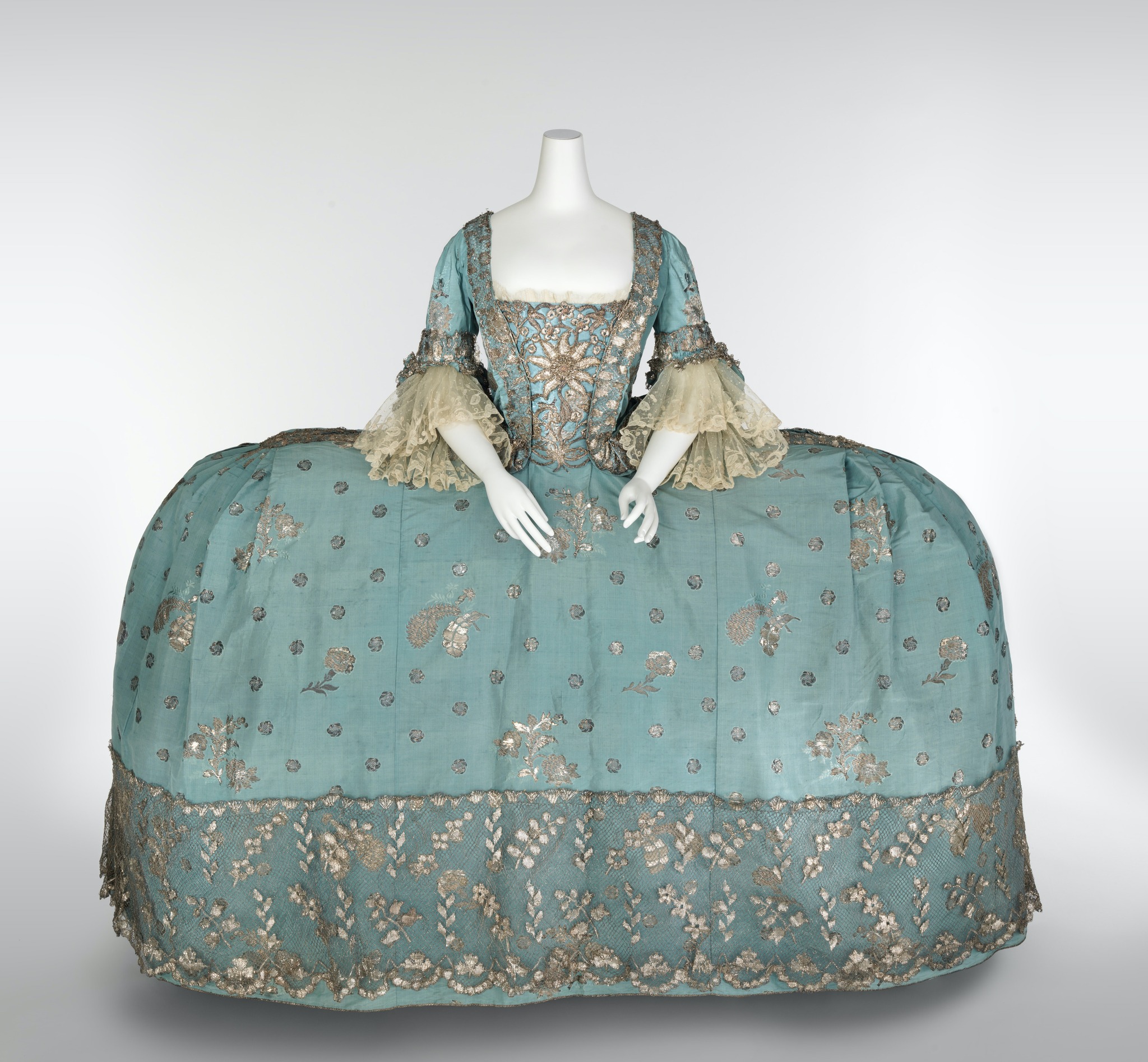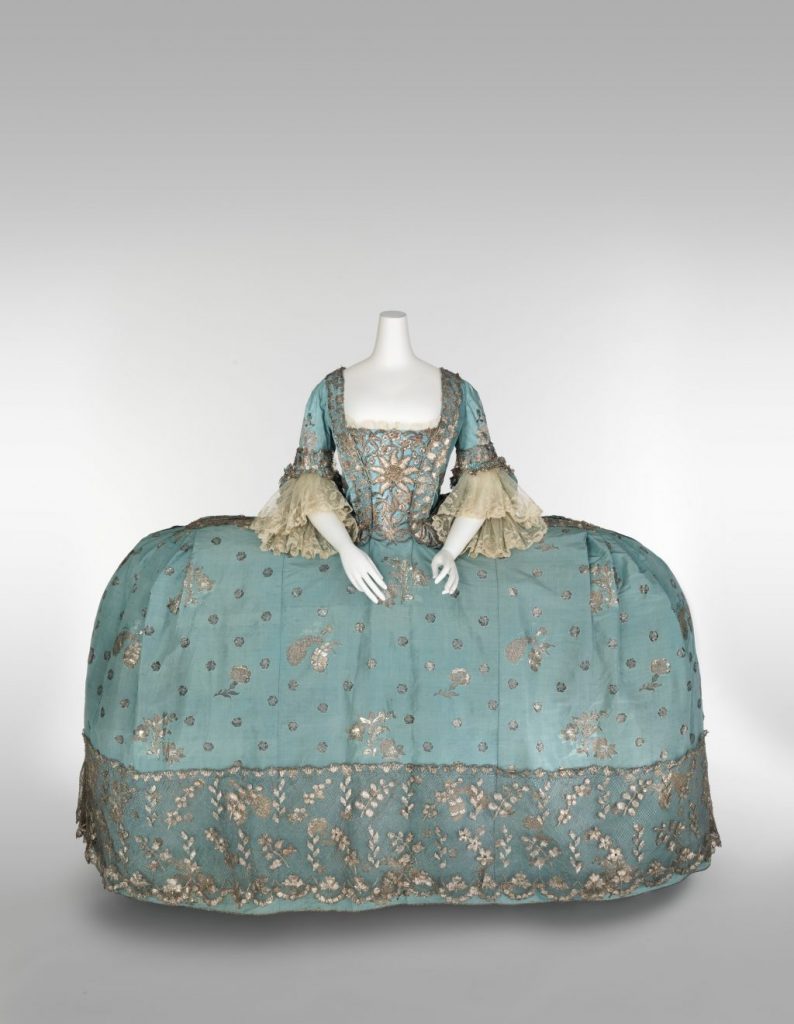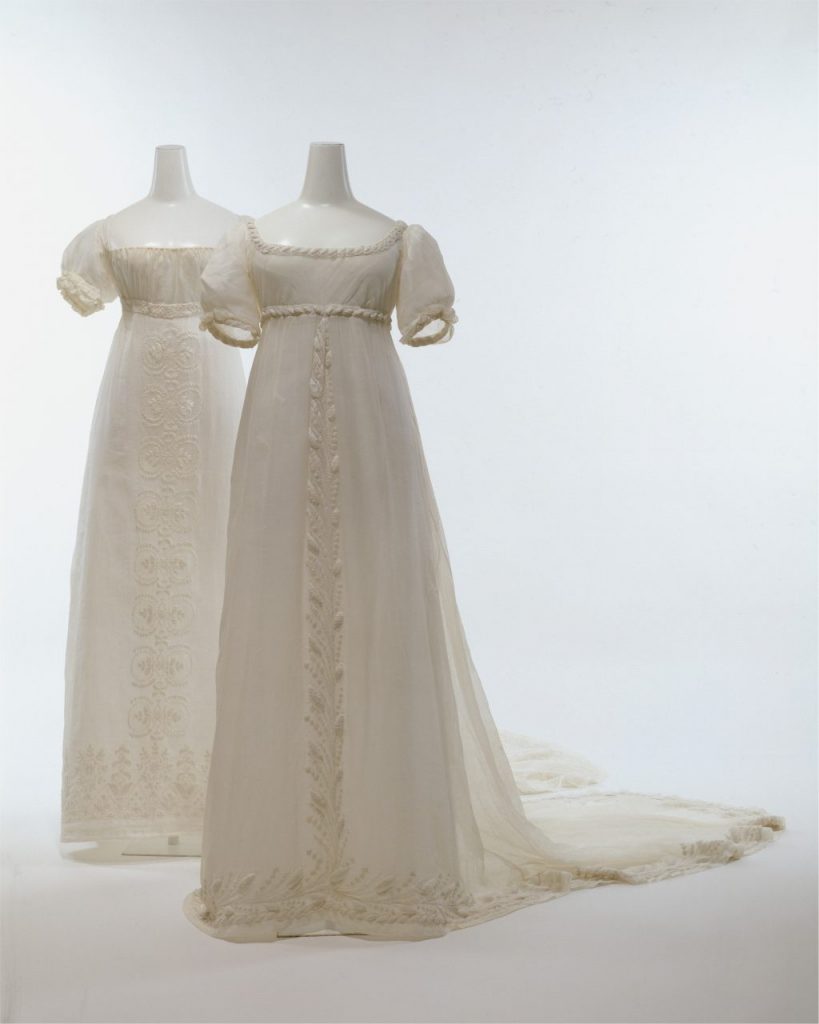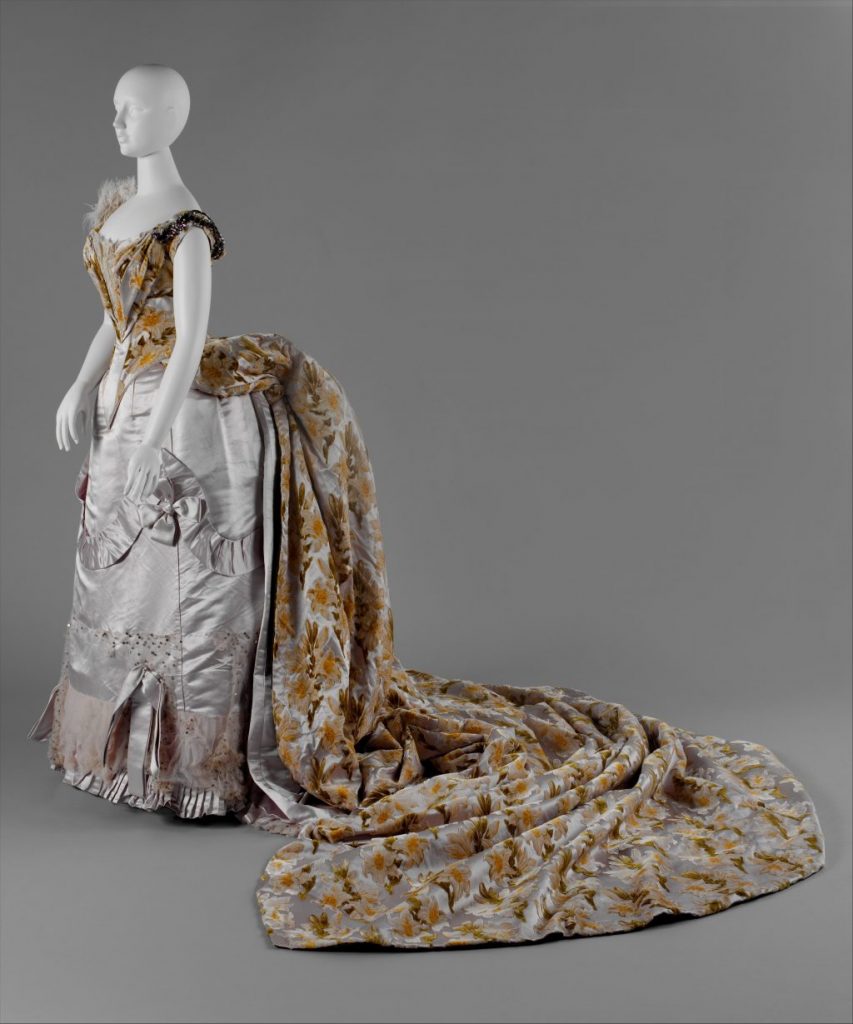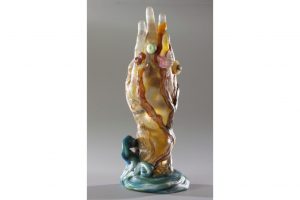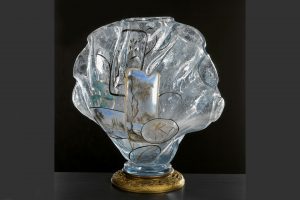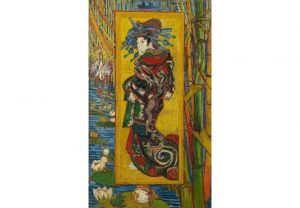A luxurious and gorgeous court dress in pale blue. The delicate silver thread decoration is also magnificent. The most eye-catching feature of this dress is the skirt, of a style popular at European courts in the 18th century. The skirt was supported from the inside by undergarments called panniers made of wands of whalebone or willow covered in linen.
The wearer of this item is unknown, but she was clearly aristocratic and of a class that made up less than 1% of the population. The type of dress indicates an even more restricted class with access to the court. What the women had to express through their outfits was a “show” of their status. Their wealth was expressed in the finest silk fabrics and the luxury of their ornaments, and their class was expressed in the form of their dress, which was not associated with labor but rather with the inability to move. The role of fashion to “show off” is seen in all eras, but it was especially prominent in 18th-century court society. This piece is an eloquent illustration of fashion as a social device.


